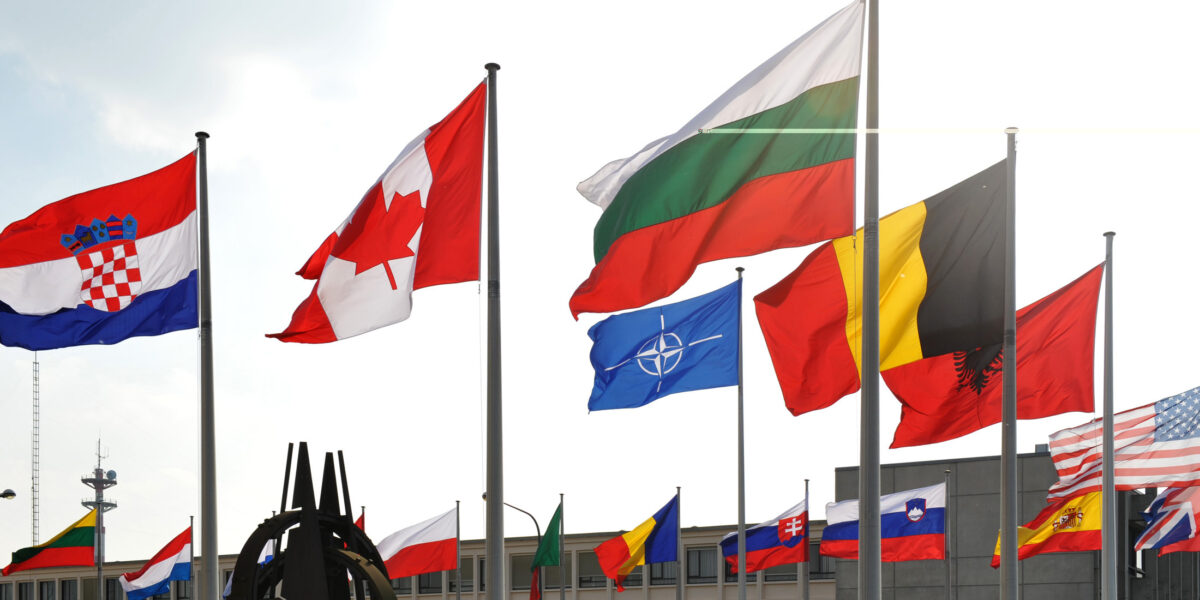NATO is the single most damaging international accord that Canada is part of. Despite near unanimous support in the media and Parliament, the alliance will soon be confronted in Montreal.
NATO increases pressure on Canada to devote public resources to war rather than pressing security and social needs. In July the Liberals committed to reaching NATO’s target of spending two per cent of GDP on the military by 2032. Recently the Parliamentary Budget Officer calculated Canada would need to spend $41 billion more per year on warfare to reach NATO’s target. Already, Canadian military spending has doubled from $20 billion to $41 billion over the past decade partly in a bid to reach the NATO target. And now Ottawa plans to double it again to $82 billion. This starves society of resources to overcome far more pressing social needs like building hundreds of thousands of units of public housing.
Through NATO Canada has nearly 2,000 troops stationed in Latvia. The seven-year-old deployment to a country bordering Russia appears to have no end. Canadians have also been stationed in Iraq over the past decade and on the high seas as part of NATO operations.
Canadian troops occupied Afghanistan for a decade as part of a NATO mission there. This country also led the alliance’s 2011 bombing of Libya and Canadian fighter jets participated in the 78-day NATO bombing of Yugoslavia 1999.
From the early 1950s to 1990s tens of thousands of Canadian troops were stationed in Western Europe as part of NATO deployments. Immediately after the alliance’s 1949 creation Canada gave billions of dollars in NATO Mutual Assistance Program weaponry to the European colonial powers suppressing independence movements in Africa and Asia.
After the breakup of the Soviet Union, Ottawa pushed to expand NATO despite promises to Moscow that the alliance would “not move one inch eastward”. Alongside the 2014 Canadian-backed ouster of anti-NATO Ukrainian president Viktor Yanukovich, this stoked tensions and contributed to Russia’s invasion of Ukraine. Alongside military training, intelligence support and former soldiers fighting, Canada has given nearly $5 billion in arms and $15 billion in other assistance to Ukraine over the past two and a half years. While Russia’s violence should be condemned, the conflict is best described as a NATO proxy war.
Between November 22 and 25 NATO’s Parliamentary Assembly is meeting in Montreal. It consists of representatives from the parliaments of the alliance’s 32 member countries. NATO’s new Secretary General, Mark Rutte and Canadian ministers will likely attend.
In response to the militarist alliance’s meeting, two demonstrations and a daylong counter summit are planned. La Convergence des luttes anticapitalistes (CLAC) has put up “Bloquons l’OTAN” and “Block NATO” posters throughout my neighborhood just east of downtown. CLAC is also circulating a 16-page anti-NATO newspaper and stickers advertising their November 22 demonstration. Earlier on that Friday another group is organizing a series of anti-NATO “decolonial education” workshops. On November 23 Le Mouvement québécois pour la paix is holding a march and the Canada Wide Peace and Justice Network is organizing a November 24 counter summit with German MP Sevim Dagdelen, Code Pink’s Medea Benjamin and others.
I’d be surprised if any of these events drew more than a few hundred but considering the dearth of criticism of NATO in the media and parliament that would be a success.
Already the mobilization has put the NATO summit under the spotlight and the dominant media will likely be forced to provide at least some critical coverage.
The mobilization is a step towards rebuilding a largely dormant peace movement. Bloquons l’OTAN.



